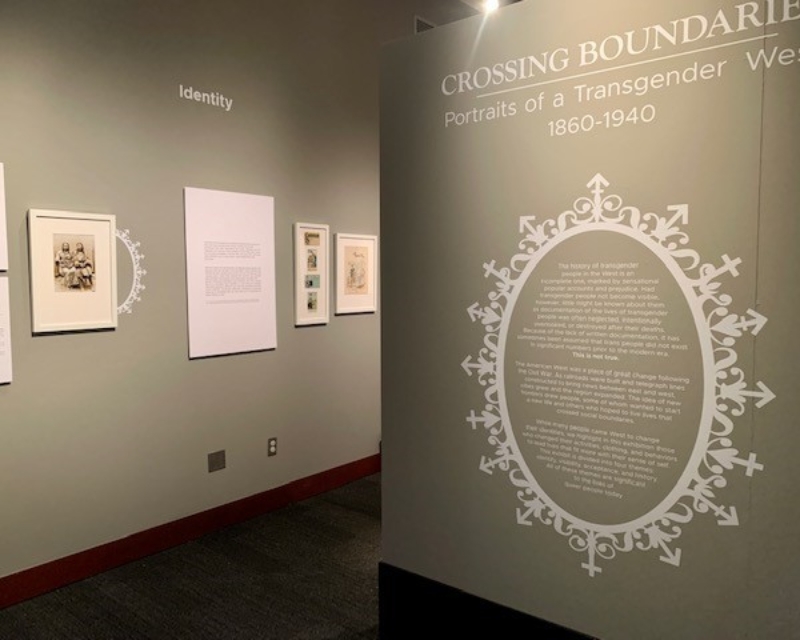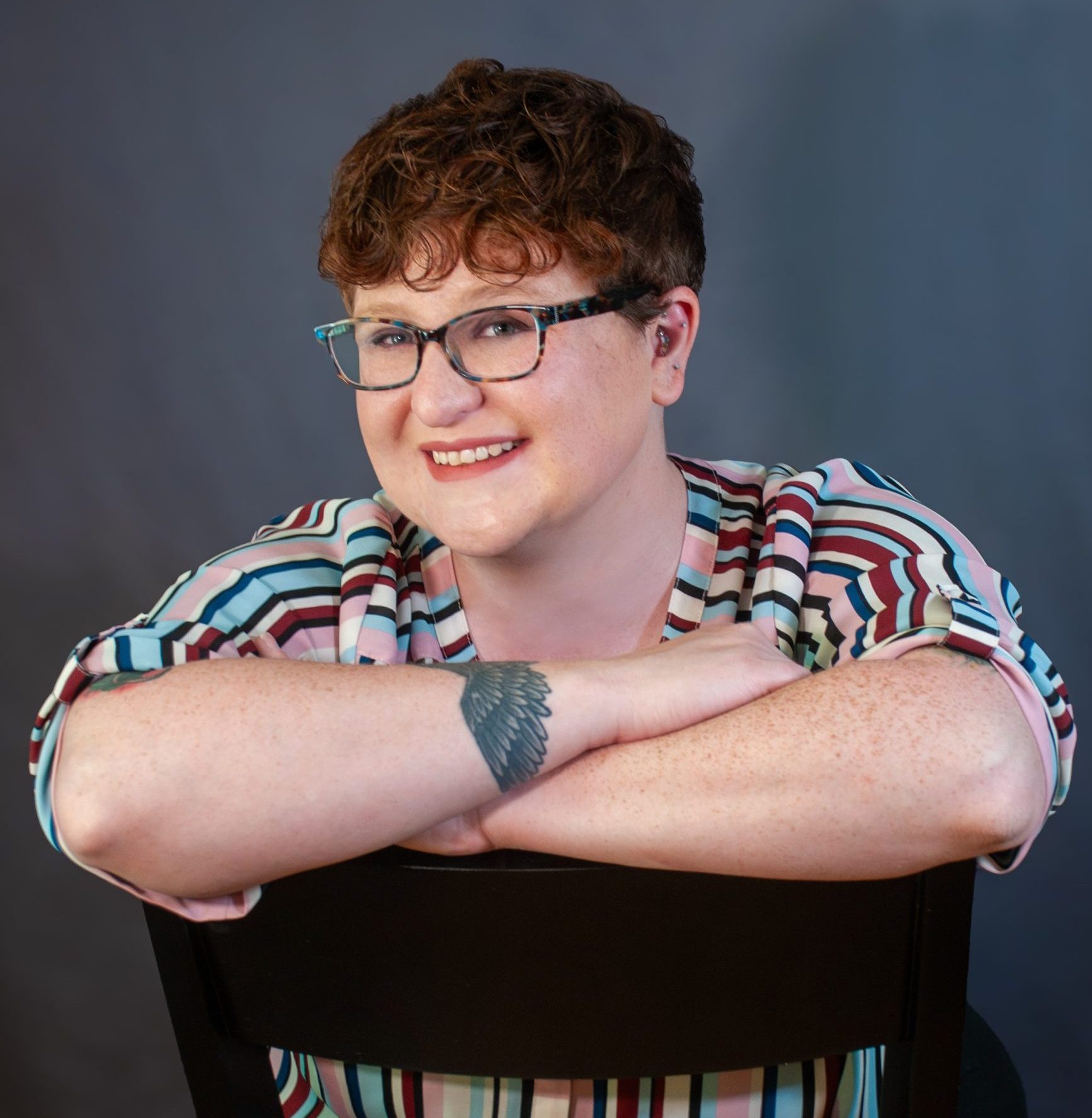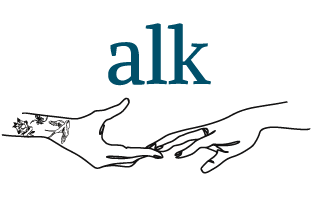Location: Tacoma, Washington
Mission: To partner with our communities to explore how history connects us all.
Important Numbers (FY24):
-
- 69,059 annual visitors
- 1,388 members
- $6.4 million annual budget

The Washington State Historical Society was founded to capture the rich history of the state in 1891, just two years after achieving statehood. The Society is committed to preserving and sharing a comprehensive history of the state, with special attention on diverse narratives of populations that are traditionally under-represented in history, including the Puyallup people and other Native people who have stewarded the land.
Gwen Whiting (she/her) came to the Washington State Historical Society in 2005, assuming the role of Head Exhibitions Curator in 2016. With Washington’s position as a leader in LGBTQIA+ rights and marriage equality passing at the federal level, by 2019, WSHS felt it was time to spotlight LGBTQIA+ history in a major exhibition.
In reviewing other museum’s LGBTQIA+ history exhibits, Whiting recognized that many institutions were exhibiting post-Stonewall history. Further, many visitors of the Washington State Historical Museum were more interested in exhibits that discussed the distant past, rather than events that occurred during their lifetime or just a generation prior. Recognizing this, Whiting began looking for opportunities to tell earlier stories of Washington’s LGBTQIA+ past.
WSHS came across the 2011 publication Re-Dressing America’s Frontier Past by Peter Boag (he/him), which documented stories of gender non-conformity in the American West from the mid 1800s to early 1900s. Expanding upon this work would allow WSHS to amplify the LGBTQIA+ experience and diversify both the public’s understanding and museum’s portrayal of the American West.
Finding stories about gender non-conforming people of color was particularly difficult. Already materials regarding gender non-conforming people in the 1860s to 1890s were scarce, as they were destroyed to protect people’s identities or as a way to invalidate and erase them. Materials about people of color are similarly difficult to come by, but Boag and Whiting were able to include a few relevant examples, such as Mother George, a self-liberated, Black and Native trans woman who found community as a midwife in the Pacific Northwest.
Translating a book about hidden history to an exhibit required creativity. While Boag and Whiting had uncovered fascinating narratives of transgender individuals from newspaper articles, public records, and private letters and diaries, there were very few objects that would bring the exhibit to life for the public.
Whiting took this as an opportunity to look more critically at existing material in the Society’s archives, as well as expand collections. Where items could not be sourced, Whiting and Boag used relevant objects from the Society’s collections to tell the stories, such as period appropriate outfits, wigs, and makeup.
While Boag was Whiting’s primary curatorial partner, the Rainbow Center supported Whiting in creating an inclusive culture surrounding the exhibit for visitors and staff. The Rainbow Center offered mandatory foundational workshops to staff on the LGBTQIA+ community, including language and history. Then, they helped facilitate open conversations about the LGBTQIA+ community to navigate misunderstanding or anxieties about the exhibit. It was important to have conversations to support staff who had no understanding of the LGBTQIA+ community, while others needed support navigating evolving language, such as the reclamation of the word “Queer.”
A second phase of workshops and conversations focused on navigating public response to the exhibit. Museum leadership knew that it was important for front-line staff in particular to understand the principles of de-escalation, while also being supported to defer to management or security if the situation grew hostile. Leadership was committed to the importance of exhibiting the long-suppressed history of gender nonconformity in the American West but also did not want to be naive and put staff in harm’s way.
“Crossing Boundaries: Portraits of a Transgender West” opened on May 29, 2021, portraying diverse stories of gender nonconformity from 1860 to 1940.
The public response was overwhelmingly positive, with many visitors experiencing the exhibit multiple times. Whiting shared that one of the most surprising, but impactful, audience patterns were the number of grandparents who visited the exhibit with their LGBTQIA+ grandchildren. The exhibit served as a way for grandparents to deepen their understanding of their grandchild’s experience, facilitate inter-generational conversation, and connect grandchildren to their past.
While the exhibit was relatively small and on display for six months due to limitations posed by the COVID-19 pandemic, “Crossing Boundaries” garnered a lot of attention. Researchers continue to contact Whiting for advice or archival material, and the public continues to share their appreciation for the exhibit. Whiting also notes that visitorship has evolved as this exhibit has catapulted the Museum’s reputation as a venue for exploring diverse historical perspectives.
The exhibit went on to win an Award of Excellence in 2022 from the American Association for State and Local History, the most prestigious achievement in state and local history preservation and used as a case study in the American Alliance of Museum’s publication, “Interpreting Transgender Stories in Museums and Cultural Heritage Institutions.”
Washington State Historical Society’s “Crossing Boundaries “exhibit is a premiere example of the importance of empowering internal champions, leading by example, prioritizing staff knowledge, and collaborating with external partners to create an impactful initiative. The exhibit served as an opportunity to facilitate staff-wide understanding of LGBTQIA+ identities, supporting affirming environments for Queer and allied staff and visitors alike. This work ensured that staff were confident in their ability to discuss the exhibit and connect with visitors of all genders and identities.
Crossing Boundaries demonstrates not only leadership in transgender historical research but also in organizational commitment to LGBTQIA+ inclusion. By prioritizing best practices in researching transgender history, inclusive visitor services, and workplace inclusion, they ensured that staff and visitors alike were affirmed by the exhibit and emerged with new understanding of the transgender and gender non-conforming community, both historically and contemporarily.
Did that example spark some ideas for your museum or organization?
Let’s connect to make those ideas a reality! Book a Discovery Call today.


